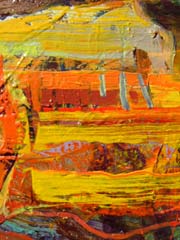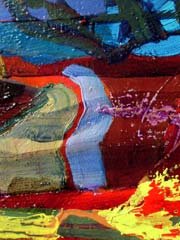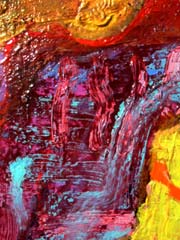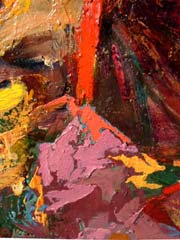To toe a canyon's rim is to be reminded that the land beneath our feet is borrowed time. An active canvas affords a promontory view. So often, I stood before the Canyon's painting and saw its structure dissolve into a meditation on a hole.
Contemplating this during the months I worked on Burro Train and Canyon Ascent, I was recurrently visited by images of Pollock's painting, The Deep. The Deep is a picture of a rupture in the surface. Its looming mystery is transcendence as a consuming act of identity obliteration.
In an inversion of ascending through a break in the clouds, transcendence here is akin to falling through a hole in the ice from which access to the surface remains a dicey proposition. For me, in this instance, access to the surface translates to enjoining the moment-to-moment pursuit of bringing the painting to resolution. Painting is an affirming rail against the hole of the tomb.
Another painter who proved a companion in the journey was Nicholas De StaŽl. During the sediment accumulation phase, I found a measure of companionship with the Tachist painter. In my imagination, his impasto strokes collide with tectonic solemnity. De StaŽl is a painter whose search for the image is the image.
Comparably, I laid layer upon layer of stroke upon stroke, perfecting the color so that the process of arriving at the unprescribed, cannily-right palette resulted in the material construction of the surface and, by extension, the object of the painting.




























